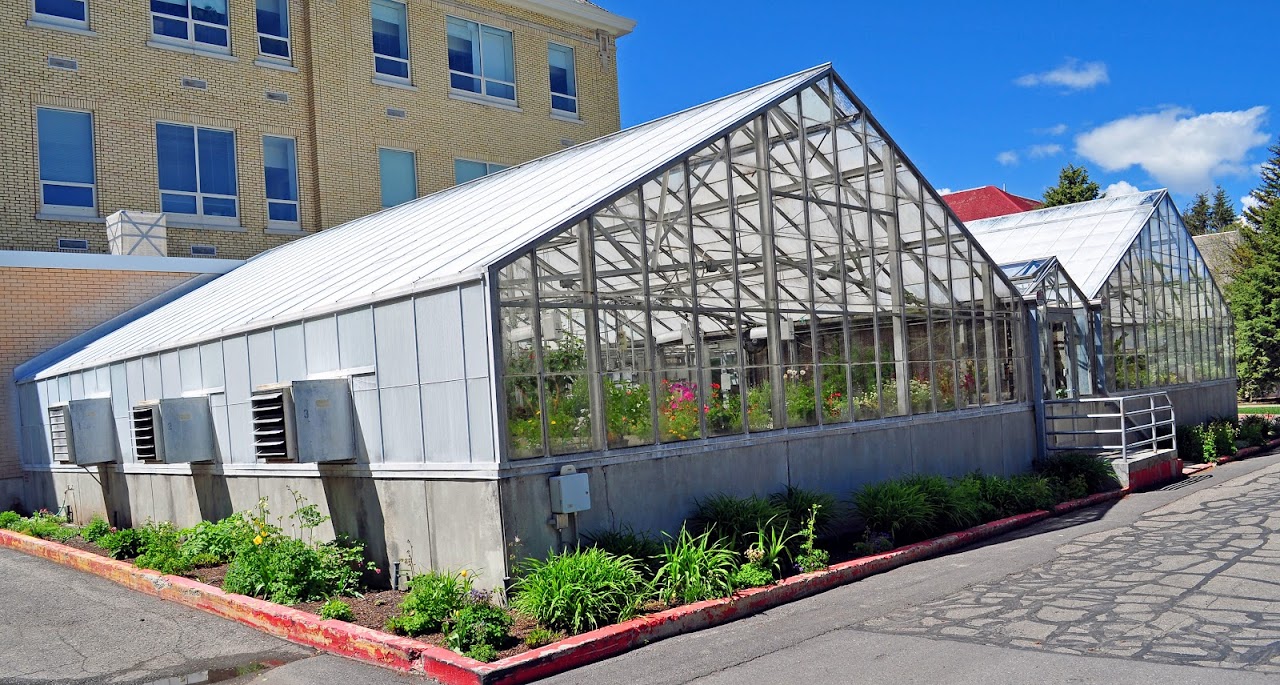Built in the mid-1960's, the Biology Greenhouse serves as an important teaching resource for the Department of Biology at Utah State University. Its plant specimens offer students an opportunity to study a wide array of plant life in numerous teaching labs. Specimens are divided up into 4 rooms, each of which serves a different purpose.

If you teach a Biology class and wish to take advantage of what the USU Biology Greenhouse offers you can contact Marianne via email or phone 797-3341
Ferns and Orchids - Room 1
Room one houses a mature collection of plant specimens that are useful for students to study in teaching labs. There is also a collection of ferns that are used for genetic research. Included in this research is the fern Lonchitis hirsuta, native to Puerto Rico, which is difficult to cultivate. In addition, there are a group of primitive plants which include Equisetum, Selaginella, and Psilotum, that aid in student's understanding of the evolution of plants. A small group of Insectivorous plants are represented which always fascinate the students.
Propagation - Room 2
Room two is reserved for research purposes and propagation for the teaching labs. Students use these specimens to study Plant Physiology (Biol 4400), Plant Structure (BIOL 4410), Plant Pathology (BIOL 4430) and Plant Systematics and Diversity (Biol 4750/6750) and other related disciplines. Because of the variety of research and propagation needs, there is always a lot of change in this room. During the cold, gloomy months of winter, this room looks like spring!
An important teaching aspect of the greenhouse is the use of Integrated Pest Management (IPM) practices in controlling pests. With the introduction of biological organisms to control insect populations, entomology students can study both beneficial insects and greenhouse pests and their impact on plant populations. Having an opportunity to see the good and the bad allows students to better understand the benefits and challenges of IPM practices while maintaining a sustainable environment.
Cacti - Room 3
Room three abounds with Bird of Paradise, bananas, hoyas, cycads, bromeliads, begonias, and an extensive range of cacti and succulents...just to name a few! The undersides of the benches are a jungle of Purple Heart and Wandering Jew that are used in pollination and stomatal density studies. Walking around in this room is like being in another place and time. The extensive collection, gives the students access to a wide variety of plants that are native to other corners of the world.
Tropicana - Room 4
Room Four is aptly named Tropicana for its tropical climate. Its fantastic specimens make it the the highlight of the facility. A brilliant pink bougainvillea stretches across the ceiling shading the hibiscus, bamboo and cycads. A Fiddle-Leaf Fig (Ficus lyrata) is the centerpiece to the room which provides habitat to a whole host of epiphytic plants such as: staghorn ferns, orchids, bromeliads and climbing plants. A small pond lies at the foot of the Fiddle-Leaf Fig filled with different aquatic plants. Chocolate, coffee and cinnamon trees demonstrate a few of the economically important plants housed in here.
This room is useful for biodiversity activities where students are introduced to concepts such as economic botany and evolutionary adaptations in plants.
Two century plants, Agave americana, dominate the sandy northwest corner of Tropicana. The century plant flowers when 10 or more years old, although some don’t flower for 60 years. Once they flower, they die. Their roots, however, live on and produce another plant. The last time the Biology greenhouse had a flowering century plant was in 1992 when a large asparagus-like stalk grew from the center of the plant bearing large, 3-4 inch yellow-green flowers and shot through the roof of the greenhouse. Our greenhouse couldn’t contain the century plant so we had to replace the broken glass panels.
Terrariums
Greenhouse Staff





